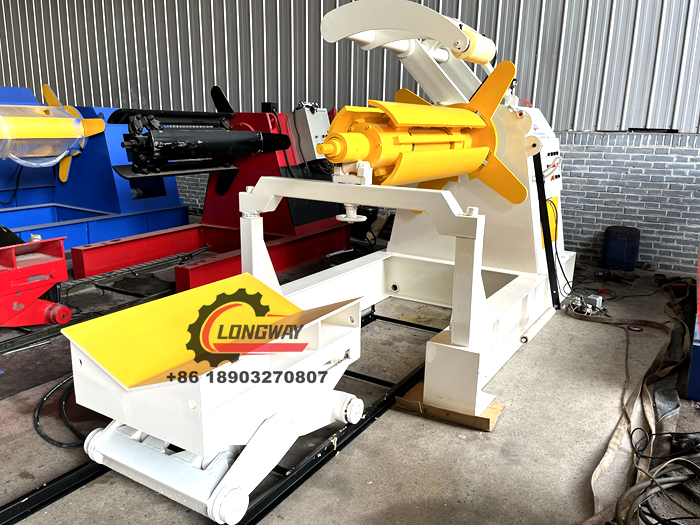metal cold roll forming machine
Understanding Metal Cold Roll Forming Machines
Metal cold roll forming machines are pivotal in modern manufacturing processes, particularly for producing various metal products with increased precision and strength. These machines operate by processing metal sheets or strips at room temperature, which allows manufacturers to create versatile and complex shapes that would otherwise require more energy-intensive methods, such as hot rolling.
The Working Principle
The fundamental principle of a cold roll forming machine lies in its ability to deform metal through a series of rollers. The metal strip is fed into the machine, where it passes through multiple sets of rollers that gradually shape the material into the desired profile. As the strip moves through the forming station, each roller imparts an incremental change, allowing for precise control over the final shape without exceeding the yield strength of the material.
Cold roll forming is highly advantageous because it can produce long lengths of uniform sections. This is particularly useful for applications in construction, automotive, and furniture manufacturing, where consistent dimensions and minimal waste are essential.
Advantages of Cold Roll Forming
One of the most significant benefits of cold roll forming machines is their ability to work with a variety of materials, including steel, aluminum, and other alloys. The versatility of these machines extends to producing a comprehensive range of products, such as beams, channels, and custom profiles tailored to specific requirements.
1. High Precision and Tight Tolerances Cold roll forming offers remarkable precision and the ability to maintain tight tolerances. This is critical in industries where components must fit seamlessly into larger assemblies. The consistent quality achieved through the cold forming process significantly reduces the need for secondary operations, such as machining.
2. Increased Strength The process of cold working strengthens the material through strain hardening. As the metal is deformed, there is an increase in the yield strength, making the components produced through cold roll forming stronger compared to those made through other methods.
metal cold roll forming machine

3. Efficient Production Cold roll forming machines can produce components at high speeds, making them incredibly productive. This efficiency is particularly advantageous for high-volume production runs, allowing companies to meet market demand without compromising on quality.
4. Cost-Effectiveness Due to the high material utilization and minimal waste generated during the process, cold roll forming is cost-effective. Fewer secondary operations and labor requirements also contribute to overall savings, making it a preferred choice for manufacturers.
Applications of Cold Roll Forming Machines
The applications of metal cold roll forming machines are vast and varied. In the construction industry, they are used to manufacture structural components such as steel studs, track systems, and roofing profiles. In the automotive sector, cold rolled parts are crucial for creating intricate components, including brackets, reinforcements, and chassis parts.
Moreover, the HVAC industry benefits significantly from cold roll forming technology. Ductwork and air conditioning components are often produced using this method, ensuring that they have the strength and durability required for efficient operation.
Maintenance and Operation
To ensure optimal performance of a metal cold roll forming machine, regular maintenance is essential. This includes checking and adjusting the alignment of rollers, lubricating moving parts, and inspecting for wear and tear. Operators should also be trained to understand the intricacies of the machine, ensuring safety and efficiency during operation.
Conclusion
Metal cold roll forming machines represent a vital technology in the manufacturing landscape today. Their capabilities contribute immensely to sectors that require high precision, strength, and cost-effective solutions. As industries continue to evolve, the demand for advanced cold roll forming technology will likely grow, driven by the pursuit of efficiency and the need for innovative metal solutions. Understanding the importance and benefits of these machines not only aids manufacturers in optimizing their production processes but also highlights the essential role these technologies play in the modern economy. With continued advancements, the potential for future applications is limitless.
-
Top Metal Roofing Machine ManufacturersNewsAug.04, 2025
-
Production Line with a Gutter Forming Machine for SaleNewsAug.04, 2025
-
Production Capacity with a Purlin Machine for SaleNewsAug.04, 2025
-
Exploring Roofing Sheets Manufacturing Machine PriceNewsAug.04, 2025
-
Drywall Roll Forming Machine for SaleNewsAug.04, 2025
-
Best Roof Panel Machine for SaleNewsAug.04, 2025
-
Roof Panel Machines: Buying Guide, Types, and PricingNewsJul.04, 2025








